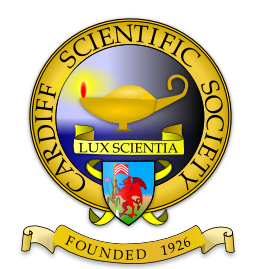☰ Cardiff Scientific Society


Presidential Address: Chemistry, the Core Science
Professor Wyn Roberts
Cardiff University

Black Night or Bright Night?
Dr Jonathan Davies
Cardiff University

The Lord Phillips Memorial Lecture: Did Adam Meet Eve: the View From the Genes
Professor Steve Jones
University
College London

Forensic Dentistry in Serious Crime
Professor David Whittaker
University of Wales College of Medicine, Cardiff

Microchemistry Chips
Professor David Barrow
Cardiff University

Epidemiology and Health Services Research in Heart Diseases
Dr Robert West
University of Wales College of Medicine, Cardiff

High Throughput Drug Screening - Discovering New Medicines in a Flash
Dr Grahame Guilford
Amersham PLC, The Maynard Centre, Cardiff

The Hydrogen Economy
Professor Keith Guy
Institute of Applied Catalysis, Chemical Industries Association, London

The Science of the Face
Professor Hadyn Ellis
University of Leicester

Ocean Research - Some of the Tools for Fieldwork
Mr Edward Cooper
University of Southampton

Why Exercise?
Professor Bruce Davies
University of Glamorgan
